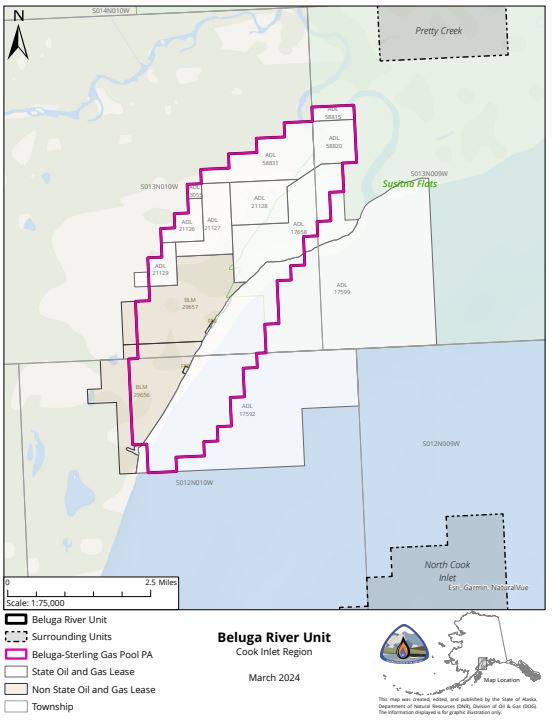The People of Alaska vs. The Legislature
Part IV: The PFD and the Search for Wisdom
Imagine a council comprised of Native elders and our legislative leadership. The topic is Alaska’s Permanent Fund Dividend (PFD) program—the original statutory formula—and whether a wise custodian of lands and minerals held in common by the people should support the PFD plan. The outcome carries profound consequences.
The PFD raises questions which plague every society: rights to lands and natural resources; issues of individual and collective sovereignty; a system to fairly distribute scarce resources; a decision-making body to decide what is equitable or a minimum entitlement.
Bridging Cultures, Unifying People
Alaska is an amazing land bridge where the values and traditions that have sustained Alaska Natives over millennia have merged with a melting pot of Russian and western European ancestry—and with them complex theories of law, government and socio-economic organization. The PFD is an amazing gift in how it melds the shared values of these two worlds. Alaska’s exceptional history serves as a shining example to people throughout the world. There is only one Alaska, one Permanent Fund, and one PFD.
If a statewide vote were taken today asking Alaskans to constitutionalize the original PFD program, it would pass. Yet, the legislature has blocked a vote by the people. Strong leadership is always needed to check the misguided impulses of the majority, but few argue over the idea that the people should hold ultimate power. It is not pure self-interest that should prevail in this matter, but universality and the merits of the PFD that should decide its fate. Conversely, if the legislature fails to prioritize the people and the PFD, future generations will know who made the decision and why.
The Philosophy Behind the PFD
Thankfully, history has preserved why the PFD program was created. While some may distort these foundational underpinnings, they cannot erase them. Hammond’s motivation for creating the PFD is more valid today than in 1983 as summarized by Suzanne Downing, MRAK’s founder, in 2016.
To elevate the PFD conversation to its deserved status requires a philosophical context. If our legislature is to change course, it will only occur after their collective affirmation that the PFD represents more than money. It embodies universal truths about human existence. We know the PFD provides a basis for prosperity that is sustainable, transportable, and transferable to future generations. It creates justice by dignifying the individual in his role as sovereign, not as a dependent of the state. The PFD is only possible in a democracy of free and equal citizens, the core principles of which unite us all: equality, conservation, communal responsibility and care for others, individual empowerment, a sense of community and belonging, interconnectedness and spiritual sustenance over the dehumanizing ethic of power and excess materialism.
Philosophical Connection: The Little Prince
Few works of literature capture this philosophical context more beautifully than Antoine de Saint-Exupéry’s The Little Prince (1943), a profoundly compelling and allegorical story of a Prince’s journey to find meaning in his life. The story draws on the works of the world’s greatest thinkers, spanning over 2,500 years of recorded history. At its core lies a critique of adult rationalism and materialism, contrasting the prince’s childlike wonder with the “grown-up” world’s obsession with numbers and power.
Central is the philosophy made famous by Saint-Exupery, that “what is essential is invisible to the eye”, emphasizing that reality lies in emotional connection, not objective facts. Mankind has a moral purpose symbolized by taming the fox, which teaches us that human bonds confer unique value, as “we become responsible, forever, for what we have tamed”. Adults prioritize acquisition over imaginative simplicity, like the businessman claiming ownership of a celestial body.
Incorporation of Native Alaskan Philosophy
To a historian, the PFD can be justified as a descendant of doctrines honed over millennia—from John Locke and Thomas Paine to worldly philosophers like Camus and Rousseau. To a Native elder, such ideology merely intellectualizes what indigenous people have adopted over centuries: for example, the belief that true loneliness stems from spiritual disconnection, not physical isolation; that human fulfillment arises from meaningful ties across the universe; that human bonds require investments of time, effort, and mutual commitment to sustain themselves; that isolation leads to meaninglessness; and that our relationships to other humans define our identity. These lasting values are what should frame the PFD debate, not who wins or loses in Alaska’s budget tug-of-war.
At its core, the PFD promotes ideals consistent with freedom and democracy—not those of socialism or communism. Alaska’s tradition of sharing among residents is not forced by state authority but extended freely from mutual respect. The Yupik word “Qaneryarautek” is more than a moral imperative. It is, in fact, a distributive principle that has sustained Native culture over thousands of years and is embedded in corporate profit-sharing Section 7(i) of the Native Claims Settlement Act. This feature was included by consensus to promote equity and to address uneven distribution of valuable subsurface resources. Many confuse this principle of distributive justice with a universal basic income, but the two have little in common.
Democratizing Wealth is Not Socialism
The Fund itself represents the pinnacle of justice insofar as it was conceived and enacted directly by the people, and mandates preservation of depleted resource revenues for future generations while also prohibiting principal depletion. The PFD program aligns with precedents in resource law, such as SCOTUS’s decision in Zobel v. Williams (1982) that cited the PFD’s promotion of residency and civic accountability, and its egalitarian per-capita distribution of dividends as defensible goals under law. Many point to Norway’s socialist model as exemplary, but only Alaska’s Fund uses direct distribution to “democratize” its wealth by affirming citizens as sovereigns, not just as subjects to tax.
The PFD draws directly from 200 years of U.S. oil and gas precedent, wholly dismissed by our legislature. Virtually every private sub-surface estate holder, with no effort or investment at all, receives a fixed royalty percentage of 12.5%, based on the value “at the wellhead”. This is provenly sustainable, and is the formula developed in 1983 to fund dividends. (25% of mineral revenue x 50% for dividends = 12.5% equivalent royalty). And yet, our legislature treats citizens as undeserving of this royalty equivalent.
Credible studies by Alaskans confirm the PFD program lifts a substantial number of citizens out of poverty and vests them with decision-making authority concerning their own welfare. Unlike means-tested welfare, which stigmatizes recipients and fosters dependency, the PFD’s universality is inclusive, based on a citizens “equal and superior” status as the inherent source of power. The PFD is proven to reduce Alaska’s Gini coefficient—a popular measure of inequality—while having a profound in-state stimulus effect on local economies via the multiplier effect.
The Legislature’s Deal with the Devil
In spite of these virtuous impacts, Alaska’s legislative leadership has abandoned their defense of the PFD for three reasons: first, an automatic dividend is money they cannot otherwise spend and take credit for; second, the PFD constituency is disbursed beyond their district, fracturing accountability; and third, alternatives for spending are made irresistible through matching federal funds, earning points for politicians but cementing a “Faustian bargain” of dependency with a Federal devil.
As reduced dividends have played out, so has Governor Hammond’s warning that “as the dividend goes, so goes the Fund itself.” Lack of inflation proofing and the plan to unify Fund accounts are examples of the legislature’s weakening commitment to Alaskans and perhaps to freedom seekers everywhere.
Keep an eye out for next-up in the series “Ghostbusting: Dispelling the anti-PFD phantoms.”
Check out previous articles in The Great Debate: The People of Alaska vs the Legislature:
Part I: Inflation-Proofing: Where’s the Problem?
Part III: The 49 Forward Plan Takes the Permanent Fund Backwards










